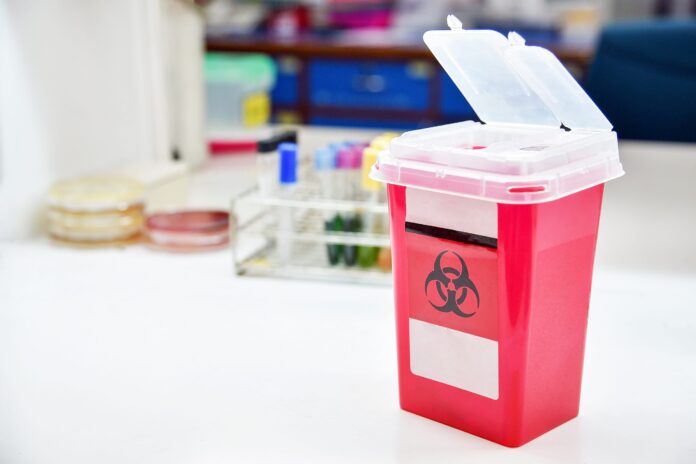
Are you looking for ways to ensure safe medical waste disposal in your healthcare facility? Look no further!
In this blog, we discuss the best practices for medical waste disposal, providing you with tips and guidelines on how to properly manage it. With these insights, you can make sure your facility is correctly disposing of hazardous waste while protecting both your staff and the environment.
Types of Medical Waste
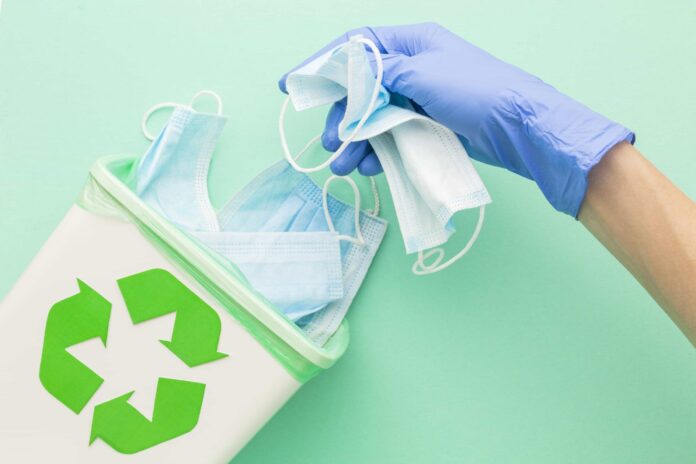
Healthcare facilities generate a wide range of waste materials that must be disposed of carefully to ensure public safety. When it comes to medical garbage, it’s important to recognize that this type of disposal differs from other forms.
There are a variety of different types of medical waste, some of which can be quite dangerous if handled improperly. Therefore, it is crucial to understand what these various types consist of and how they should be managed accordingly.
The following are the main categories of medical waste:
- Sharps include needles, scalpels, and any other devices contaminated with bodily fluid or tissue that can puncture or cut skin. These must be disposed of in special containers designed specifically for sharps disposal
- Pathological wastes include cells/tissues from biopsies or surgeries, as well as cultures and stocks from laboratories. These must be incinerated before disposal in order to prevent their spread.
- Pharmaceutical wastes include unused medication and expired products that contain potentially hazardous chemicals like heavy metals and drugs such as antibiotics
- Chemotherapy is one of the most hazardous forms of medical waste due to its high concentrations often used for treating cancer patients; these need to be treated differently than other types and may require separate collection due to their toxicity
- Infectious wastes contain microorganisms that can cause disease in humans or animals; this type includes soiled items like bandages, blood-soaked gauze, gloves, and masks
- Genotoxic wastes include carcinogens (cancer-causing agents), mutagens (agents that change genetic material), and reproductive toxins (toxins affecting reproduction), all three categories having significant environmental risks if not properly managed during disposal.
To get rid of all this waste, it is essential to dispose of it well. This can easily be done by hiring external companies like https://www.medwastemngmt.com/.
Best Practices for Medical Trash Disposal
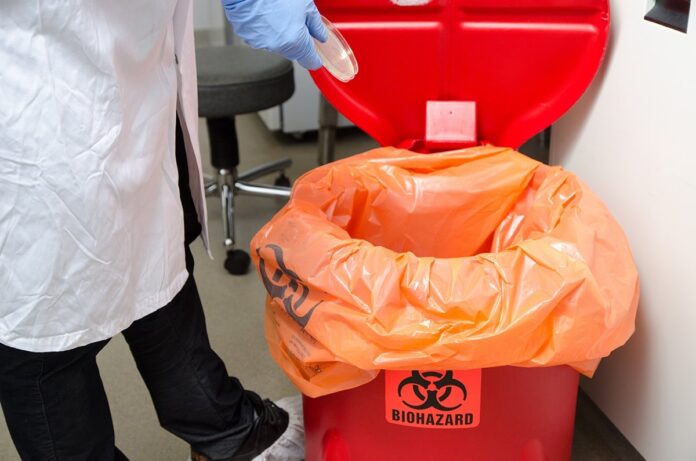
Medical waste is any solid or liquid material generated during the diagnosis, treatment, or immunization of human beings or animals that may pose a threat to public health.
Healthcare facilities must regularly and effectively dispose of medical garbage. Following established protocols and best practices for medical garbage disposal is essential in order to protect patients, personnel, and the environment. Facilities must ensure that they comply with all applicable regulations when disposing of medical waste.
The following tips can help healthcare facilities establish an effective process for disposing of medical waste:
- Identify all types of medical trash your facility generates ─ Make sure you are aware of which wastes require special handling and which can go into regular garbage bags or recyclable materials.
- Label containers properly ─ Clearly mark hazardous materials with biohazard symbols or other warning labels.
- Segregate it by type ─ Segregate all hazardous solid wastes from non-hazardous garbage as well as from reusable materials. This will help streamline the collection, create a safer work environment, and reduce risks associated with improper disposal practices.
- Minimize the number of containers used for storage ─ To maintain compliance with local regulations on disposal limits, consider using space efficiently when storing medical waste containers in order to reduce the overall number needed.
- Verify technology requirements ─ Research technological options available to safely manage large volumes of hazardous material prior to disposal at an appropriate facility such as a dedicated incineration unit designed specifically for this purpose.
- Train staff ─ Ensure that personnel understands what falls under the “medical” or “hazardous” classification when it comes to disposal; this is often different than what is accepted in regular garbage procedures in a given city or state.
- Establish safe transport requirements ─ Whenever possible use dedicated transportation service providers who have experience handling hazardous materials safely and properly following Department of Transportation standards and other safety requirements associated with transporting healthcare-related wastes over long distances.
Proper Labeling
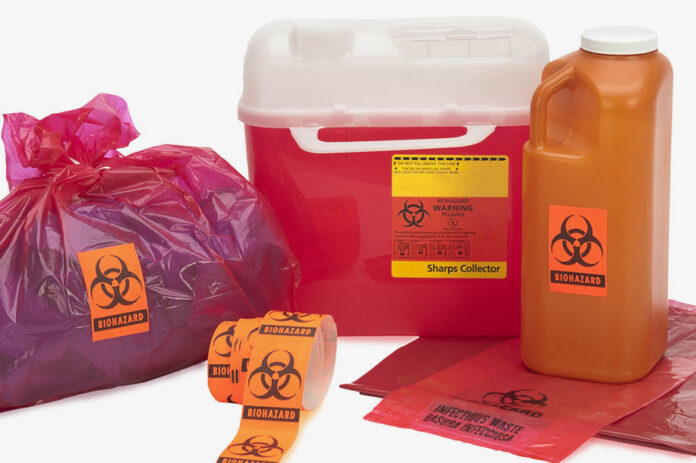
All healthcare facilities must ensure that medical waste is placed in containers for transport with appropriate labels. The label should be bright and visible so it can be easily seen, even when the container is full and stacked against other containers for transportation. Labels may include the following information:
- Facility name or address
- Contents
- Date
- Source or generator
- Type or category of waste.
Labels should also be easy to read and understand (ideally using printed text instead of handwritten) and should include a hazardous material symbol, an international biohazard symbol, or a puncture/leak-resistant packaging symbol prominently displayed on the outer surface of the container – all in accordance with applicable labeling requirements specified by your state/regulatory agency.
Finally, labels must not detract from the original factory-imprinted label on the container. All healthcare facilities should also consider preparing necessary documents tracking container usage based on their specific requirements.
Proper Storage
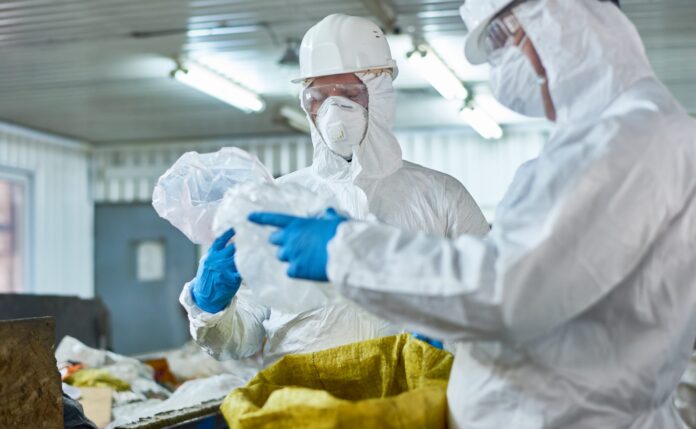
When storing medical trash, it is important that facilities use a clean, dry container with a tight-fitting lid. The container should not be used for any other purpose and should display a clearly visible label outlining the type of waste it contains.
Containers must be stored inside a secure area and kept away from food or areas where personnel may come in contact with them. Any spills or overfills should be immediately reported and cleaned up by facility staff wearing appropriate PPE.
The quantity of garbage stored will depend on the volume received at each facility, but excess amounts should not be allowed to accumulate; additional containers may be needed if overflow is an issue.
Furthermore, each container should only contain one type of medical waste; mixed containers are prohibited. All containers must also be inspected regularly for tears or bulging that could indicate potential contamination issues due to improper closure or hazardous reactions within the container itself.
Conclusion
By developing facilities’ medical waste management practices that include regular assessments, access control measures, careful surveillance of inventory levels, proper labeling procedures, and information education sessions for personnel involved in the handling or disposal of medical waste materials, healthcare facilities can improve their safety environment for everyone involved.






